The growing season is quickly approaching, so I reached out to the members of the Garden Ecology Lab to ask them to share three plants they’re looking forward to growing this year.
LeAnn
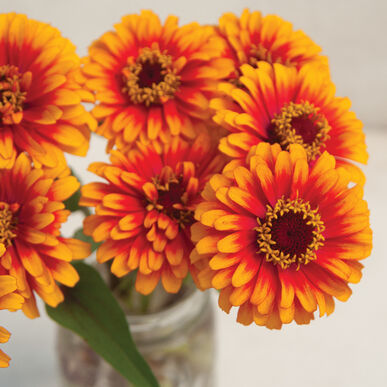
I love zinnias so much. This year I want to branch out and grow some less usual ones. Like those in the Queen Lime series and Zowie™! Yellow Flame.
This isn’t a plant as much as a technique: I really want to maximize vertical space, and grow tomatoes and squash vertically. I’m going the route of C-Bite stake clips, self described as “tinker toys for the garden.” I can attach and snap to common garden stakes and build my own structures. Up, up and away!
After watching all of the success in the Grow This! challenge last year with potatoes in grow bags, I’m inspired to grow potatoes for the first time. Really excited about this. And remember: the time to plant potatoes is St. Patrick’s Day.
Tyler
The three veggies I am most looking forward to growing this season are tomatoes, peppers, and lettuce. Last season we grew over ten varieties of hot peppers and tomatoes in our hüglekultur beds. These types of beds are great for warm season plants that need just the right soil temperature. I am also looking forward to growing lettuce again next season because I eat so much salad! I got these amazing varieties of lettuce from Wild Garden seeds in Corvallis that I am super excited to try next year. To save space, I like to grow lettuce in a tower. I used chicken wire fencing, plant debris, and potting soil to create the foundation. I then used a stick to poke holes and plant the seeds. It grew into a beautiful ball of lettuce and I am so excited to try it again!
In addition to veggies, my goal for my outdoor space has always been to maximize the amount of flowers and wild space, while also reducing the amount of turf grass. During the winter, our garden looks a little unsightly with all the tarps and cardboard we use to smother the grass and weeds. In the spring, we remove the tarps and broadcast seeds all over the yard. My goal is to provide pollinators with year round foraging and improve the biodiversity on our property. One of our big projects last year was making a sunflower room in the yard. We planted American Giant sunflowers in a circle that eventually became a beautiful area for our community to hang out, surrounded by flowers and pollinators.
Jen
Elliot & I don’t have a yard to garden in so we’ve been experimenting with container gardening and a tiered planter box. The only place we can put them is on the north-facing side of our townhouse, which receives direct sunlight for a maximum two hours during the height of summer, so you can imagine our options are limited!
This year I am excited to stop experimenting and just grow some plants that have been successful: strawberries, basil, nasturtium. Although these are fairly basic selections, they have proven to produce in abundance in our tiny space! ( Abundant compared to squash and tomatoes that grow, take up a ton of space, and then get powdery mildew and die before a harvest is even possible).
Mykl
- Marigolds. I’m inspired to make a flower one of my goals this years as well. The timing for some summer and especially fall crops for me has been hard as I usually move in the middle of summer. One way or another, I expect to have a place to grow something over this period, and some of it will hopefully be beds of Marigolds.
- Napa cabbage, cuz I need to make kimchi again and stop buying it.
- Sweet potatoes, cuz I think I can do it again this year. And hey, when you strike it big, you gotta try again.
Nicole
I don’t have a garden to grow in here in Corvallis, but I do have an apartment… with a north-facing balcony. While the conditions aren’t ideal, I do plan to grow a few things in small containers this year.
1) Begonias! I grew them last year, and since they thrive in the shade, I had great success. They provided such a nice pop of color to the balcony and I loved sitting out there in the morning. Plus, you can get so many different colors that even if I have multiple pots they can all bring their own fun.
2) Chard. I haven’t tried this one before… but even if the crop I grow isn’t quite enough to make a meal out of, I love chard because it’s beautiful to look at. Plus, it’s one of the few crops that might make a go of it in the shade.
3) Fiddle leaf. While I can’t eat this one either, I’ve been growing a fiddle leaf since I moved into my apartment. It lives inside with me during the winter and goes back outside during the summer. It’s easy to take care of, grows relatively quickly, and I love the way the big leaves can add texture and some height to a small gardening space.
Mallory
Last June, I moved into a rental house that has a small, mostly-shaded garden bed in the backyard. I’ve helped out my parents around the garden throughout my childhood, but this is the first garden I can call my own! Last summer I worked on bringing some life into the soil (which was incredibly compacted and muted grayish-brown in color) by growing a cover crop of buckwheat that flowered and brought some bees and syrphid flies to the yard. I then tilled in the “green manure” which attracted worms, millipedes and molds into the soil! Hopefully this will pay off in the Spring, as I’ve seeded a mixture of native and nonnative wildflowers from pollinator seed mixes.
As an undergraduate student studying horticulture I am both thrifty and surrounded by opportunities to acquire plants for free! I am enrolled in a plant propagation course this Winter and will have many seedlings coming my way to plant in the Spring, and through my involvement at the Oak Creek Center for Urban Horticulture, I generally grow whatever comes my way from the rejects, cuttings and leftovers from the greenhouses there.
If the flower seeds don’t pan out, I hope to grow some of my favorite herbs: Rosemary, Thai Basil and Cilantro!

Cara
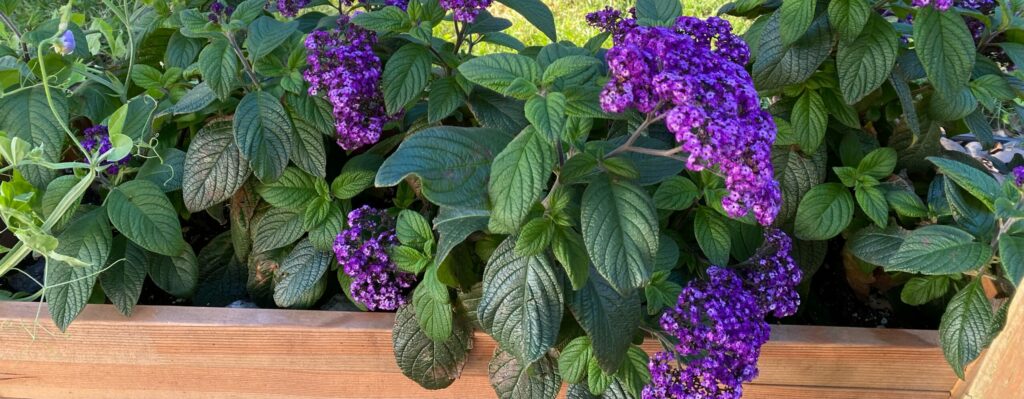
1. Prospera basil- this is a disease resistant Italian type basil that simply makes life easier in the pacific northwest! The downy mildew resistance actually comes from a thai basil parent, though I can’t detect that in the flavor profile much. Planting this, I can rest assured my basil crop won’t be destroyed by wet weather late spring.
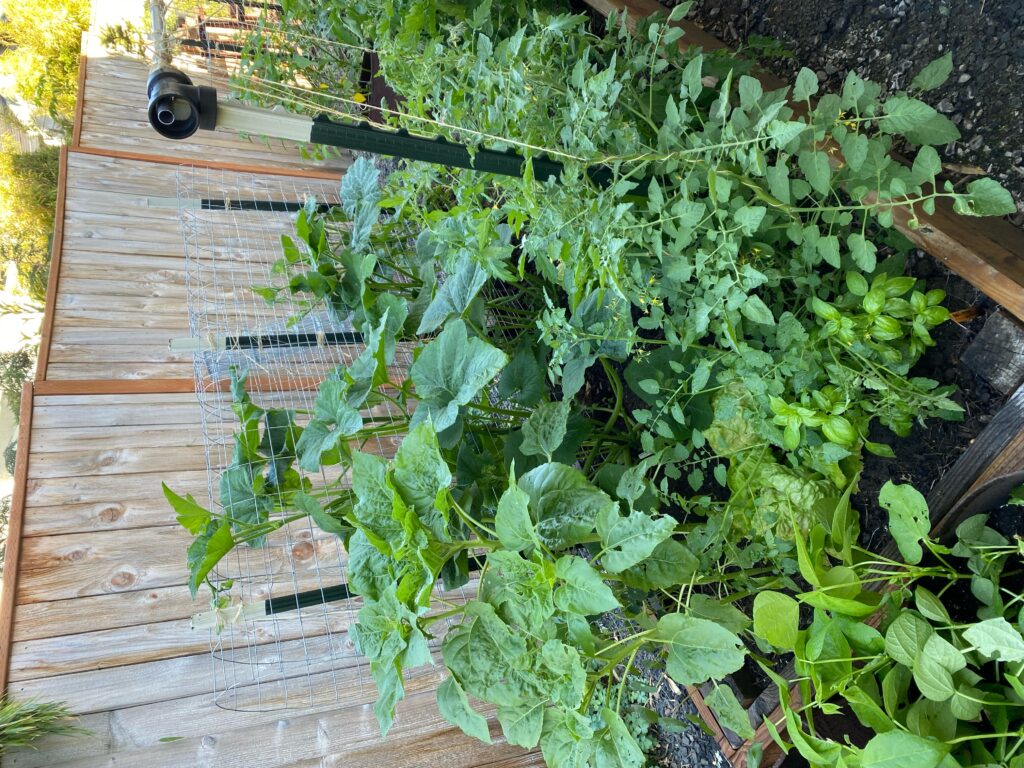
2. Japanese trifele black tomato- My favorite heirloom tomato. This tomato is indeterminate, and has a complex flavor profile that usually comes with black tomato varieties, as well as a silky-smooth texture. It is wonderful for fresh eating and canning alike! I like to train my indeterminate tomatoes to a simple trellis constructed of fence posts, electrical conduit pipe, and twine.
3. Heliotropes- I always purchase a few heliotropes for my patio. The smell is intoxicating and I love their old fashioned charm. This is the first year I am planning on starting them from seed.
Signe
Most of my planning for this year has more to do with long-term restructuring than individual plants, but I do have a new bed of Tristar day neutral strawberries I was able to put in last fall. I’m hoping for a much extended strawberry season by adding those to the June bearers.
I am encouraging more natives to spread and self-sow along the front of my property, where I put in a dry streambed a couple of years ago to catch a neighboring spring before it goes down the street. This has worked very well to provide groundwater into the summer.

I’ll be continuing the attempt to eradicate a bed of one native, Asclepias speciosa, which got away from me even though I knew it would be a spreader and was watching it. (Anyone want any? NOT recommended for small spaces). I’ve been collecting Carex, both native and non, to evaluate which are best for gardens here (durable, non-running, attractive year-round).
In my vegetable garden, I will NOT be growing potatoes this year. Last year’s large crop was riddled with wireworm, so I want to give the beds a rest. I may just grow summer cover crops, and grains that can serve that purpose, except for tomatoes, which I always grow a few of.
Charlotte
I’m excited to grow moringa again. Moringa is a superfood, very nutrient dense, and I think the foliage is quite aesthetically pleasing. Moringa prefer warmer weather, so the plants will grow all summer and then go dormant for the fall/winter. We planted the moringa in containers so we can move them around seasonally without disturbing the roots. We have a few dormant moringa plants hanging out in the greenhouses at Oak Creek Center for Urban Horticulture that are waiting for the return of sunny weather.
Everyone at the ILC Garden is excited to grow Lagos Spinach (Celosia argentea) again. Lagos Spinach (also called Nigerian Spinach, or Efo Shoko) is in the Amaranth family and has beautiful reddish-purple leaves with a bitter taste that really adds to the flavor profile of salads, soups & stir-fries.

Lagos spinach is not quite as bitter as some of the other amaranth leaves I’ve tasted before. As you might deduce from the name, the plant is indigenous to West Africa, but they seemed to be well adapted to the soils and climate of the Willamette Valley summer. Very heat and drought tolerant!!! The plant flowers later in the season, which is an added bonus for pollinators. The lagos spinach was such a lovely addition to the garden last summer… I’ve included a picture, the Lagos spinach is nestled between the collards and sunflowers in the photo.
I also plan to try growing more watermelon this year. We only planted two watermelon plants at the ILC Garden last year, and they did not fair well. We transplanted them a bit late, so I don’t think they had enough time to reach maturity. This year I’m dedicating about 150 sqft under the high tunnel for growing watermelon!
Svea
I don’t have any plans for planting this spring, as there is very little outdoor space at my house in Corvallis, and the indoor space is currently dominated by my twin brother’s many, many succulents, and his newly indoor orange tree. But at my family’s farm, my mom has endeavored these past few pandemic years to bring back her pre-children garden that she loved to work in.
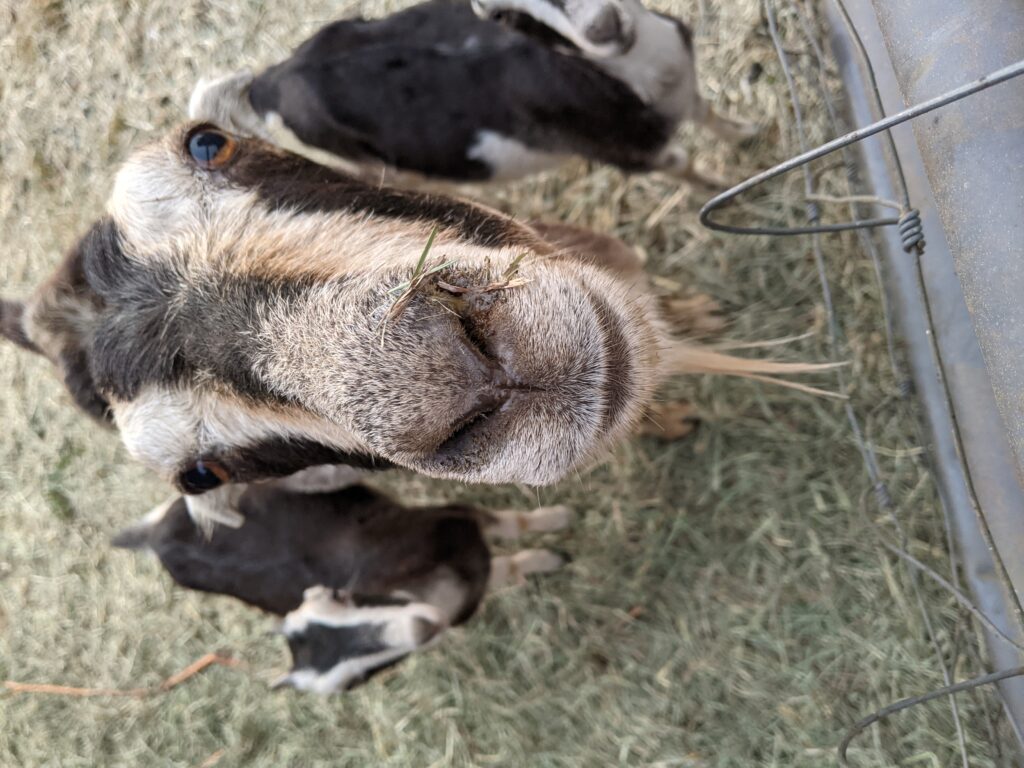
This spring she is planning on planting some different types of tomato plants, as we are a tomato loving family. She also loves to plant sunflowers every year, and we have a measuring contest on which one gets the tallest. I think this year she is going to try her hand at growing different types of peppers and squash. I know she is very excited, and loves to try to to grow many different things, so if anyone has any suggestions, she would love to hear them.
In terms of growing food for the animals, the goats love to eat any (safe) leftovers, or any overripe harvests. Anything they don’t like, the pigs are more than happy to clean up! So we don’t grow anything specific, but some favorites are sunflower seeds for the goats, and potatoes for the pigs. Included here is our goat Nutmeg and her babies from last summer, waiting for some treats!
Gwynne
We don’t have a vegetable garden going yet, but last year we had an amazing cover crop mix for the paddocks that were “renovated” by our pigs. The mix included amaranth, field peas, squash, sunflowers, chia, sesame, millet, sorghum, flax, a variety of cereal grains, and other things that I couldn’t identify. It was certainly the most unusual pasture forage that I’ve seen, but our cows and sheep loved it!
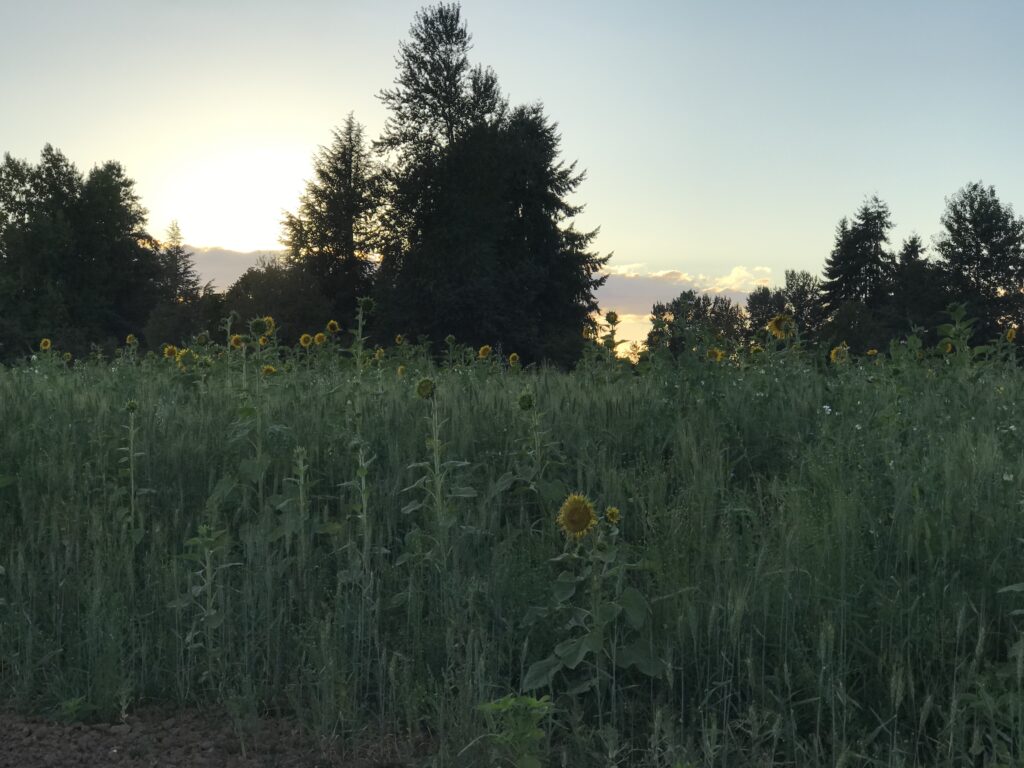


















Summer mixing and lemon squash, excited because they’re both new to me